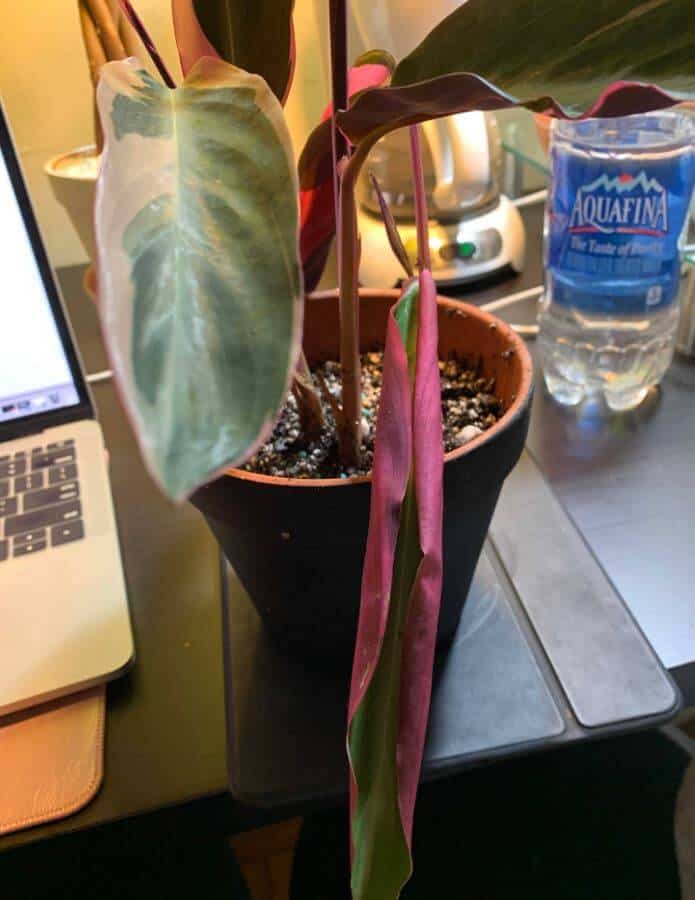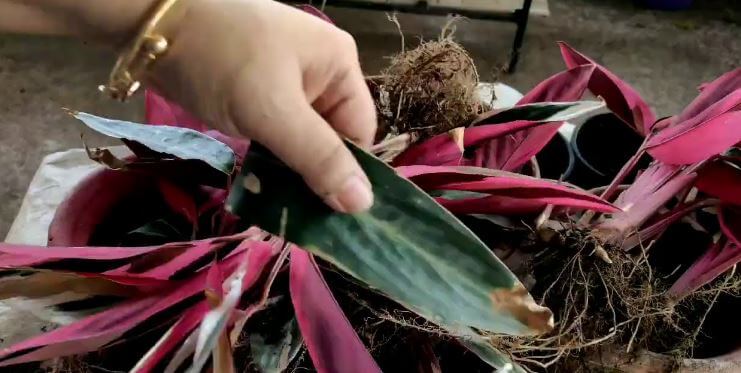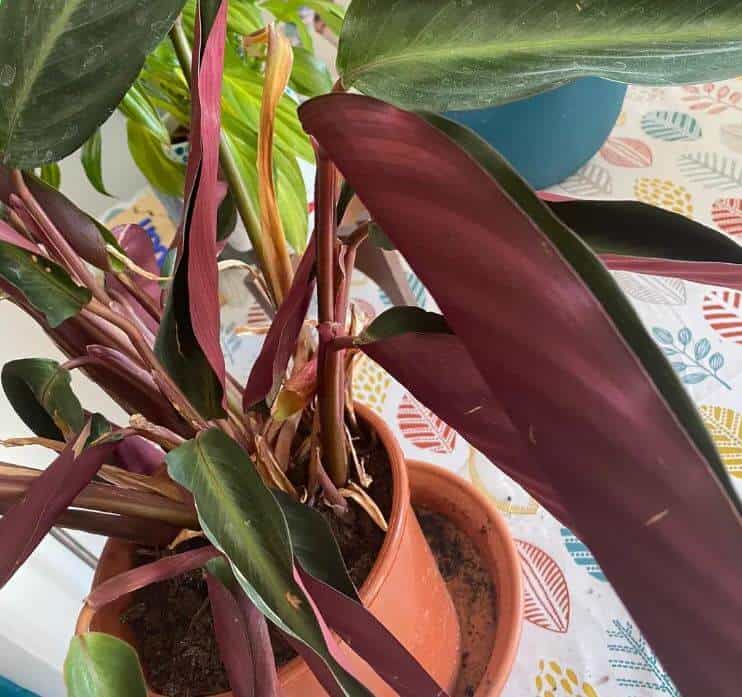Last Updated on July 5, 2023 by a Friendly Gardener
Triostar Stromanthe is beloved for its vibrant colors on impressive foliage. These plants are striking additions to home décor or an outdoor gardening landscape. They can be cultivated indoors or outside with relative ease if the proper environmental conditions are provided.
A principal issue for this plant’s growth habit and blooming is leaf curling. Stromanthe Triostar Leaves Curling is an indication that something in their care routine may be stressing the plant. With such a stunning vivid appearance, leaves beginning to curl can be distressing to plant parents. Often, drying leaves accompany the curling which can contribute to diminishing if not ruining the beauty of the plant.
What Are the Causes of Triostar Leaves Curling?

There are a variety of environmental or care reasons for triostar leaf curling. Consider these:
Underwatering
If the Stromanthe Triostar does not receive enough water, expect leaves to begin curling. Without a moist soil bed, the root system will also not be able to absorb nutrients from the soil. Foliage will begin to brown and curl ruining the plant’s appearance. The Stromanthe Triostar requires a moist soil bed but will suffer if left to stand in soggy soil. These plants can also exhibit sensitivities to water quality. Collected rainwater is ideal or distilled water rather than tap water containing chemicals and minerals.
Stromanthe triostar brown tips are also a sign of an underwatering issue. Water will arrive from the plant’s roots up the stems and onward to the leaves. The leaf tips are the last plant part to receive water. If there is too little water available, it will finish before it arrives to leaf tips causing them to dry out and die.
Harsh Sunlight Exposure
Stromanthe leaves curling can also be the result of exposure to direct sunlight. Direct light is too harsh and will affect the plant’s appearance. Foliage cannot withstand the extreme heat produced by direct sunlight. The vibrant colors of the foliage will begin to fade in direct sunlight. Leaves will turn brown and then curl. Another risk with direct sunlight is that the soil bed will dry out too quickly. Stromanthe Triostar plants love bright light that is strictly indirect.
Overfeeding
The overfeeding of this houseplant can contribute to an excessive buildup of salts and nutrients in the soil bed which will negatively affect it. Proper fertilization is good for growth, but overfeeding will create problems for the root systems and will then affect foliage. When foliage develops a burned or dried-out appearance, you are probably dealing with excessive feeding. Overfeeding your plant will weaken it leaving it susceptible to pest infestations and infections. Over-fertilization can be fatal to these plants if not corrected.
An Improper Container

If your container is too small for the plant, this will prevent parts of the plant from receiving adequate nutrition. As a result, leaves will turn brown and begin to curl. Your plant will not be receiving sufficient water, oxygen, and nutrients to thrive.
What to Do About Calathea Triostar Leaves Curling
When Triostar Stromanthe leaves have dried and begun to curl you will not be able to save them. You can, however, still save the remaining healthy leaves and protect them from damage. The proper treatment will depend on identifying what caused the browning and curling of the damaged leaves. Check the location and care routine of your plant to determine what caused the foliage damage, consider these solutions to save your plant from further damage.
Pruning

Because damaged foliage that is brown and curling cannot be saved, experts recommend pruning these from the plant. Trim off affected foliage to stimulate the growth of new leaves.
Change the Container
If the Stromanthe Triostar has become root-bound due to having outgrown its pot, it’s time for a container change and repotting. Choose a larger pot that will offer a more even distribution of soil nutrients, water, and fertilizer when applied. Pots should have several drainage holes to prevent soggy soil. If you are prone to overwatering, consider selecting a clay or terracotta pot to aid in wicking away excess moisture from the soil.
Forgetting to Water or Underwatering

If your Triostar Stromanthe is suffering because you have neglected to water it or have provided too little water, one thing you need to do is check the moisture level in the soil bed regularly. You can do this by acquiring a moisture meter or by poking the soil with your finger to the second knuckle. You’ll need to do this every couple of days until you determine how quickly the soil bed dries and how often your plant needs water.
Feeding and Overfeeding
Regardless of what the cause of Triostar Stromanthe leaves curling is, once you identify the reason, you should hold off feeding until the plant’s root system has an opportunity to recover. If this does not aid in resolving the situation, you may need to repot your plant with fresh soil mix. Also, avoid fertilization if you change the soil for a month or two. When you do begin feeding never give your plant more than the recommended dosage. Feed during the growing season in spring and summer and opt for a liquid fertilizer for foliage plants. Apply the diluted fertilizer after you have watered your plant, to prevent stressing root systems.
Excessive Sunlight Exposure

If your plant has been left in the sun, move it to a shaded area or beneath other taller vegetation.
Preventing Stromanthe Triostar Leaves from Curling
Follow these tips to prevent your Triostar Stromanthe leaves from curling.
- Place your plant in a shaded location with access to indirect light.
- Water the plant regularly taking care not to overwater. Soil should never become soggy and water-laden.
- Feed your plant with a diluted balanced liquid fertilizer every two to three months during the growing season.
- Repot if your plant has become root bound or outgrown its container.
- Prune aging and damaged foliage to stimulate new growth.
- Mist foliage occasionally, use a pebble tray, or a space humidifier to increase humidity in the area of your Stromanthe Triostar.
- If you notice signs of a pest infestation such as aphids, spider mites, or others, you should treat your plant with an insecticidal soap or horticultural oil such as neem oil.

